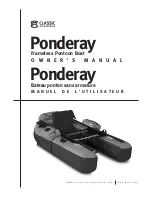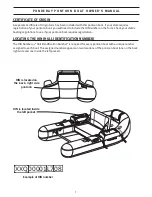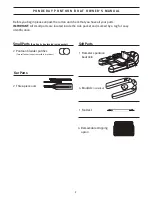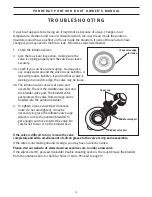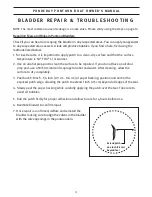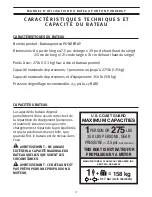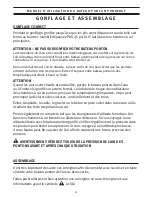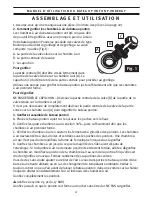
13
P O N D E R A Y P O N T O O N B O A T O W N E R ’ S M A N U A L
B L A D D E R R E P A I R & T R O U B L E S H O O T I N G
Repairing Tears and Holes in Pontoon Bladders
Check if you can hear air escaping the bladder in any suspected areas. You can apply soapy water
to any suspected areas as well. A leak will produce bubbles. If you find a hole, fix it using the
methods listed below.
1
. For best results, it is important to apply patch to a clean, dry surface and that the surface
temperature is
50
° F (
10
° C) or warmer.
2
. Use an alcohol prep pad to clean the surface to be repaired. If you do not have an alcohol
prep pad, use a
50
/
50
mixture of isopropyl alcohol and water. After cleaning, allow the
surface to dry completely.
3
. Peel back
1
/
8
inch -
1
/
4
inch (
0
.
3
cm -
0
.
6
cm) of paper backing, position and anchor the
exposed patch edge, allowing the patch to extend
1
inch (
2
.
5
cm) beyond all edges of the tear.
4
. Slowly peel the paper backing while carefully applying the patch over the tear. Take care to
avoid air bubbles.
5
. Rub the patch firmly for proper adhesion and allow to cure for 4 hours before use.
6
. Reinflate bladder to confirm repair.
7
. Once repair is confirmed, deflate and reinstall the
bladder making sure to align the valves in the bladder
with the valve openings in the pontoon skin.
Extend patch
one inch (
2
.
5
cm)
beyond tear
NOTE: The most common cause of leakage is a loose valve. Please verify using the steps on page
12
.


